Rahul Gandhi’s Yatra
Rahul Gandhi’s Bharat Jodo Yatra has garnered considerable attention and sparked various opinions regarding its success. In this comprehensive analysis, we delve into different facets of the yatra, highlighting the notable shifts in Rahul Gandhi’s body language, as well as drawing parallels to his previous endeavors. By incorporating these additional examples, we aim to provide a comprehensive perspective on Rahul Gandhi’s journey.
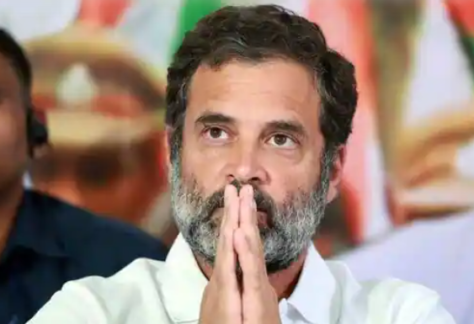
WHY THE YATRA? UNITING INDIA THROUGH MASS MOVEMENTS
Yatras hold deep-rooted significance in Indian tradition and political discourse. Throughout history, visionary leaders like Mahatma Gandhi and Lal Krishna Advani have embarked on transformative yatras, rallying support and fostering national unity. Rahul Gandhi’s Bharat Jodo Yatra, which recently completed 100 days, follows in this tradition, aiming to unite India and bridge divides through a nationwide journey. Drawing inspiration from his past initiatives such as the Kisan Yatra and the Jan Aakrosh Rally, Rahul Gandhi demonstrates his commitment to connecting with diverse communities and addressing their concerns.
WALKING - A SIGN OF COHESION AND RAPPORT?
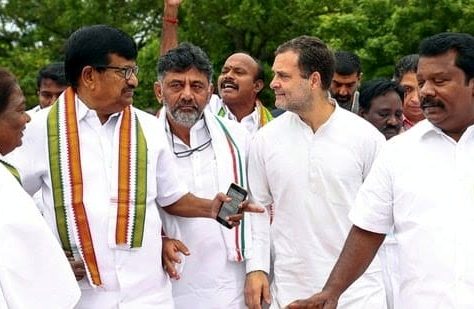
This is a picture taken from the very initial days when the Bharat Jodo Yatra had just begun. What can you say, looking at various body language signals in this mage? Observe carefully the body language of everyone who is present. Do they look like they are a team or not? Even if they are all walking together, there is a lot happening in terms of their body language. Their facial expressions, placement of the hands, orientation of the faces etc. clearly indicates that they are not that happy. There is apparent dislike seen in their body language. It’s more of a confrontation than the projection of a happy or cohesive team.
Let’s move to this image of Rahul Gandhi’s Bharat Jodo Yatra. Do the people who are walking with him look like they are with him or not? It appears that leaders who are walking along with Rahul don’t seem that interested. Observe how everyone is looking away from each other. Although everyone is walking they don’t seem to be a part of a team, as they are oriented away from each other. Remember when you are walking with a team or you want to project yourself as a team you walk close to each other. But here, look at the space between the people. There is too much of a gap, not a good sign to project yourself as a team.

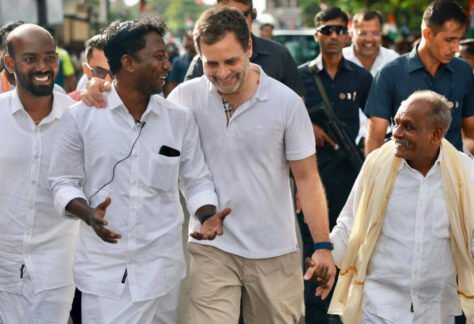
Let’s move to the next image here, taken from the later days of the yatra. People are walking with Rahul here, look how different this is from the previous one, it’s a better sign of team bonding. They are smiling and there is good eye contact. Even the spacing between them is less. Rahul is using touch generously which helps to build rapport and also is a sign of bonding.
Examining early visuals from the Bharat Jodo Yatra, we carefully analyze the body language signals displayed by the participants. Despite walking together, there is an underlying sense of discontent evident in their facial expressions, hand gestures, and spatial orientation. However, contrasting this, we draw insights from Rahul Gandhi’s previous campaigns, such as the Padyatra in Uttar Pradesh, where his interactions with locals showcased a remarkable rapport and a cohesive team dynamic.
CONNECTING WITH ALL: INCLUSIVE ENGAGEMENT


The Bharat Jodo Yatra has gained substantial momentum, primarily due to its ability to attract a diverse range of individuals from various walks of life, including leaders from different political affiliations. This noteworthy participation signifies a collective commitment and solidarity. Rahul Gandhi’s transformation becomes evident as we observe his interactions with children during the yatra. By adapting his body language to their level, employing warm smiles and open gestures, he ensures an inclusive environment where youngsters feel comfortable discussing their issues. This empathetic approach can be witnessed in his past engagements, such as his “Shakti” program, where he actively connected with youth and empowered them through relatable examples.
ESTABLISHING EMOTIONAL CONNECT: CONSOLING AND SUPPORTING
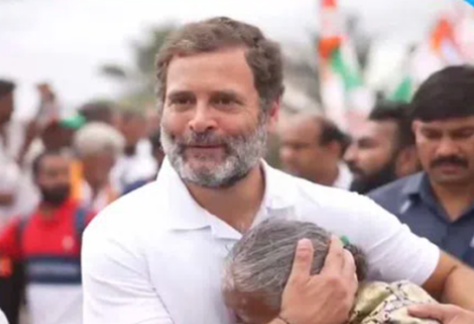
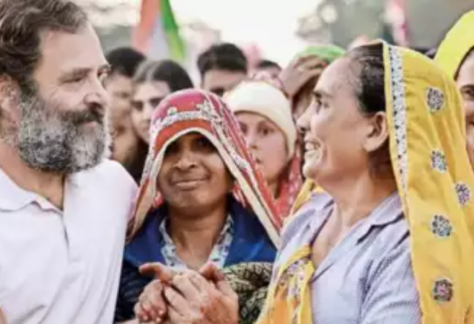
Notably, adults also come forward during the yatra, voicing their concerns and seeking guidance. Rahul Gandhi’s body language exudes empathy as he actively listens and expresses genuine emotions in response to their experiences. Through comforting gestures like hugs or holding hands, Rahul Gandhi effectively conveys his commitment to stand by them, both symbolically and practically. His past interactions with distressed communities, such as the victims of natural disasters or marginalized groups, reflect his consistent efforts to forge emotional connections and offer support.
QUICK RAPPORT
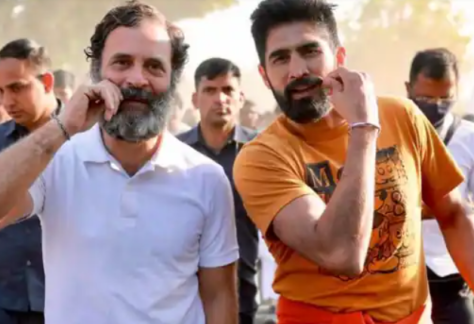
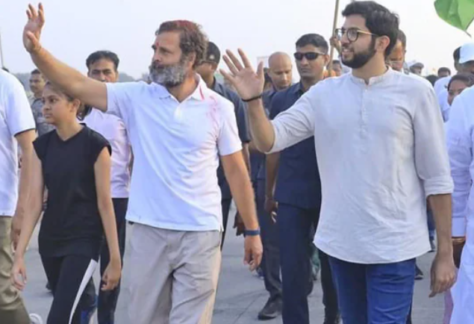
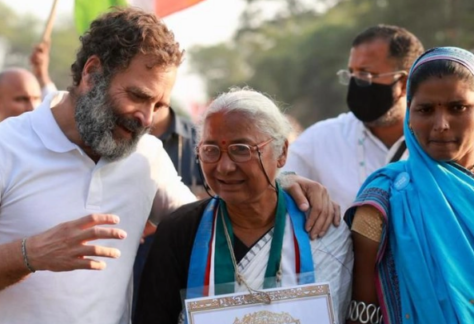
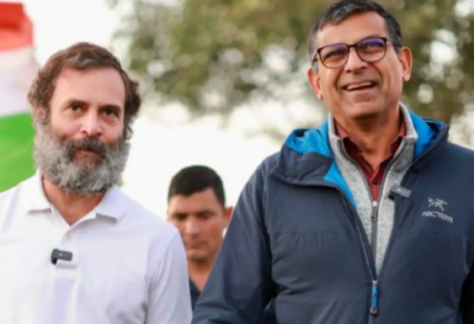
Uniting Supporters through Common Actions
Engaging in activities that foster camaraderie, such as walking together, can swiftly establish rapport among participants. Notably, renowned leaders, experts, and actors joining the Bharat Jodo Yatra exemplify their support for the cause through their presence, sans explicit verbal endorsements. Similar instances of collective actions can be observed in Rahul Gandhi’s previous campaigns, like the “Bharat Bachao Rally,” where prominent figures align themselves with his vision through shared activities, creating a sense of unity and solidarity.
EMBRACING OTHERS' CONCERNS: A PLATFORM FOR HIGHLIGHTING ISSUES
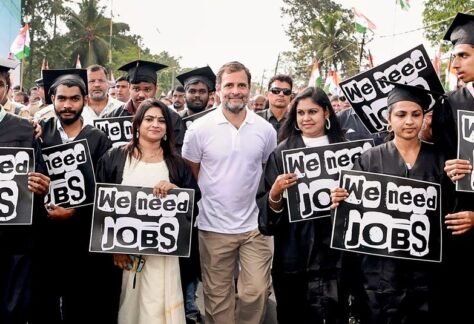
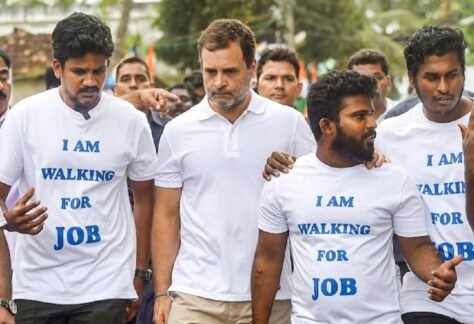
A Platform for Highlighting Issues
The Bharat Jodo Yatra serves as a platform for individuals with their own initiatives or concerns to express their grievances, not only to Rahul Gandhi but also to the wider public. This multifaceted engagement contributes to the widespread discussion surrounding the yatra. Noteworthy attire choices, such as wearing coordinated outfits, play a strategic role in creating a lasting impression on people’s minds, ensuring their cause and participation remain unforgettable. Rahul Gandhi’s previous endeavors, such as the “Save Democracy Rally,” provide additional examples of how he provides a platform for individuals to voice their concerns and garner collective support.
In conclusion, our analysis reveals a transformation in Rahul Gandhi’s body language signals throughout the Bharat Jodo Yatra. His increased interest in understanding and connecting with people from all corners of India resonates positively with the teams joining the movement. By highlighting these changes and drawing parallels to his previous works, we gain a comprehensive understanding of Rahul Gandhi’s evolving approach to leadership and his commitment to fostering national unity and inclusivity.
REFERENCES
- https://telanganatoday.com/rahul-gandhi-resumes-bharat-jodo-yatra-from-karnatakas-bommagondanahalli-on-36th-day
- https://www.indiatoday.in/india/story/rahul-gandhi-backs-english-education-in-schools-slams-bjp-2311005-2022-12-19
- https://english.mathrubhumi.com/news/kerala/bharat-jodo-yatra-enters-alappuzha-rahul-gandhi-to-meet-youngsters-special-school-children-1.7881168
- https://www.livemint.com/politics/news/rahul-gandhi-defends-rajasthan-government-over-adani-row-11665277189399.html
HOW WE CAN HELP
Enhance your teaching impact with our tailored programs focused on improving non-verbal communication. Learn to build stronger connections with students, manage classrooms effectively, and boost student engagement. If you are looking to upgrade your body language skills, check out our online pre recorded courses on various topics that come with lifetime access. You can also explore our Signature Body Language Personal Coaching program Reach out to us on – +9199309 41534.






















